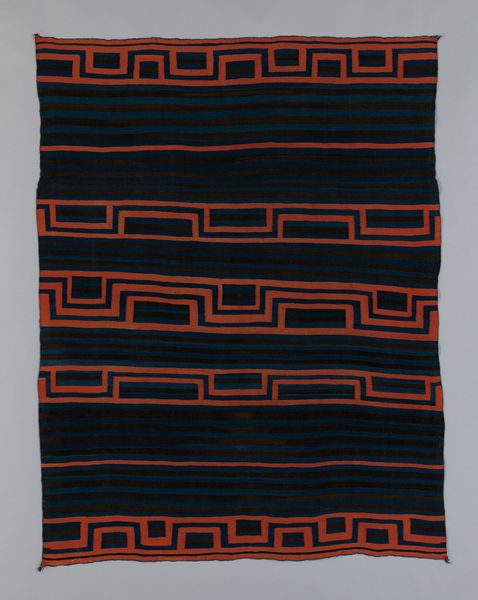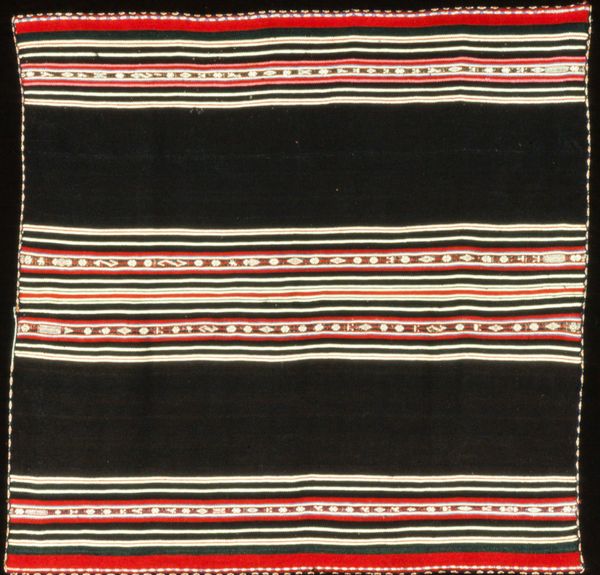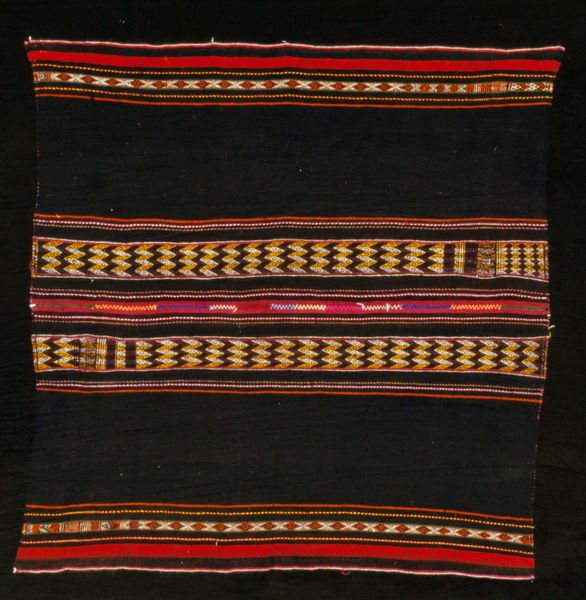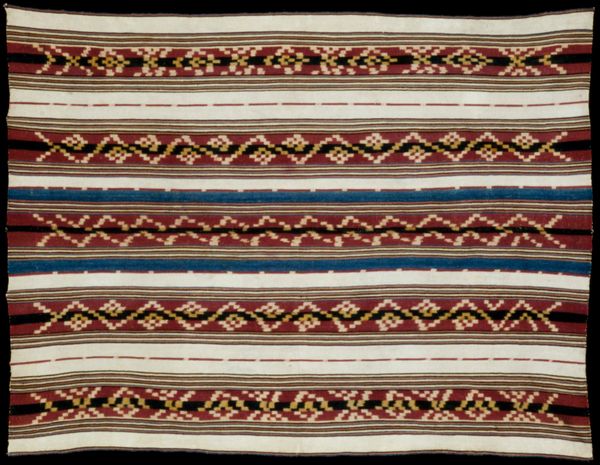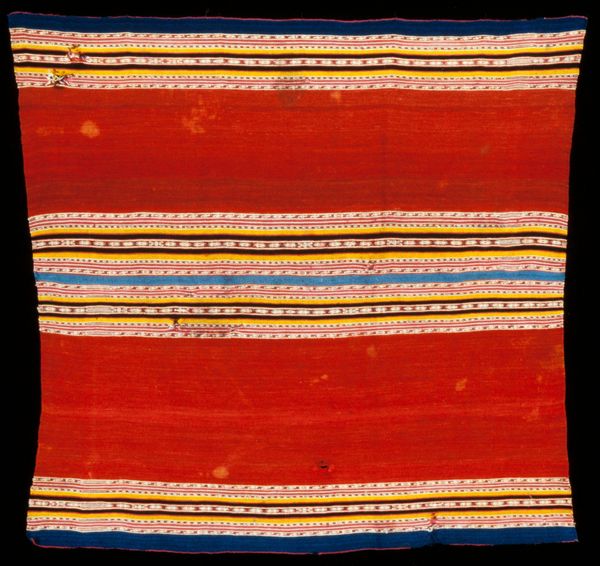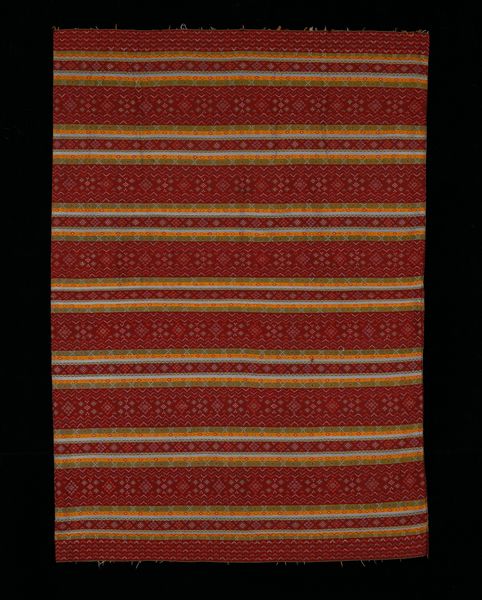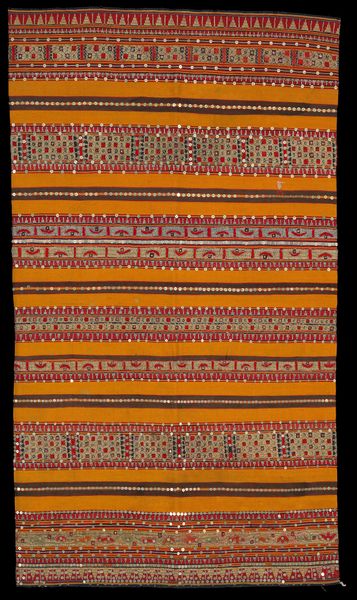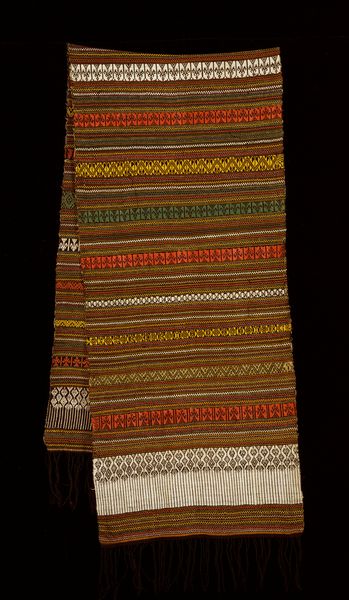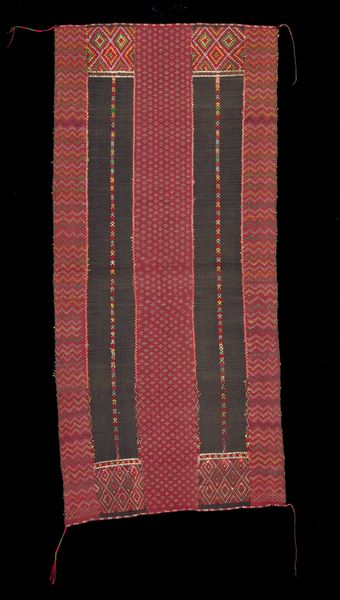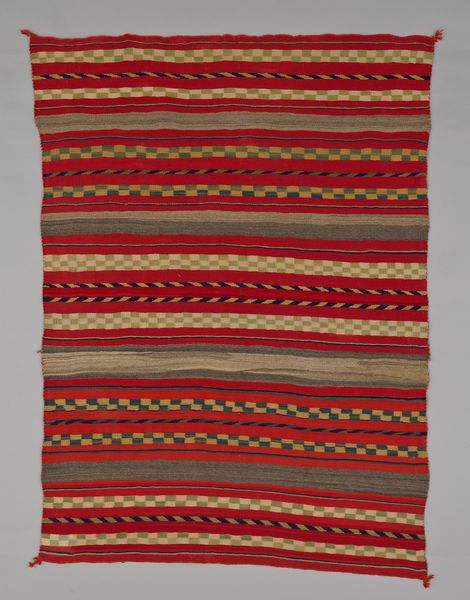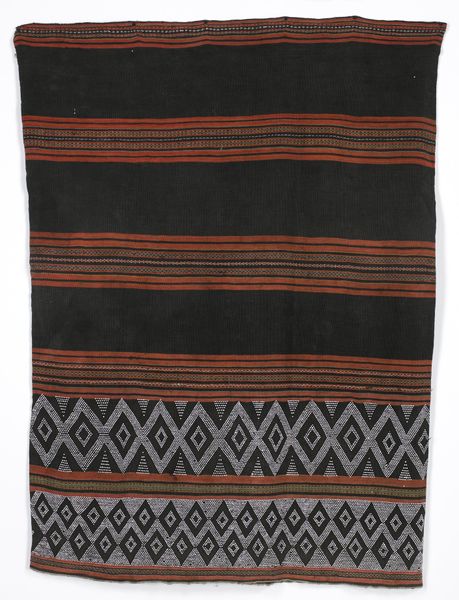
fibre-art, weaving, textile
#
pattern heavy
#
fibre-art
#
weaving
#
textile
#
geometric pattern
#
abstract pattern
#
organic pattern
#
geometric
#
repetition of pattern
#
vertical pattern
#
pattern repetition
#
textile design
#
layered pattern
#
combined pattern
#
indigenous-americas
Dimensions: 44 x 30 1/2 in. (111.8 x 77.5 cm)
Copyright: Public Domain
This blanket was created by a Navajo weaver, of the Diné people, using wool. Textiles have always been central to Diné life, serving practical and symbolic functions. Blankets like this one embody Diné cultural values and social structures. The geometric patterns, rendered in red, white, and dark blue, may represent elements of the natural world, clan affiliations, or spiritual beliefs. Weaving is traditionally a woman's art form, passed down through generations and the blankets serve as a medium for storytelling and cultural preservation. In the 19th century, Diné weaving became increasingly commercialized as trade with European settlers expanded. While this brought economic opportunities, it also led to cultural appropriation and exploitation. To fully understand the historical significance of this blanket, we might consult ethnographic studies, oral histories, and museum collections. These resources help us understand how art reflects and shapes social relations.
Comments
minneapolisinstituteofart almost 2 years ago
⋮
Both commercial and handspun yarns were used to create this stunning Third Phase child's blanket. The bold red, white, and indigo motifs reference both the man’s and woman’s Third Phase blankets in that terraced diamonds and triangles merge with the traditional placement of horizontal stripes. The innovative use of salmon-colored trade yarn works to further expand upon Diné traditions and help pave the way for more daring experiments with color.
Join the conversation
Join millions of artists and users on Artera today and experience the ultimate creative platform.
